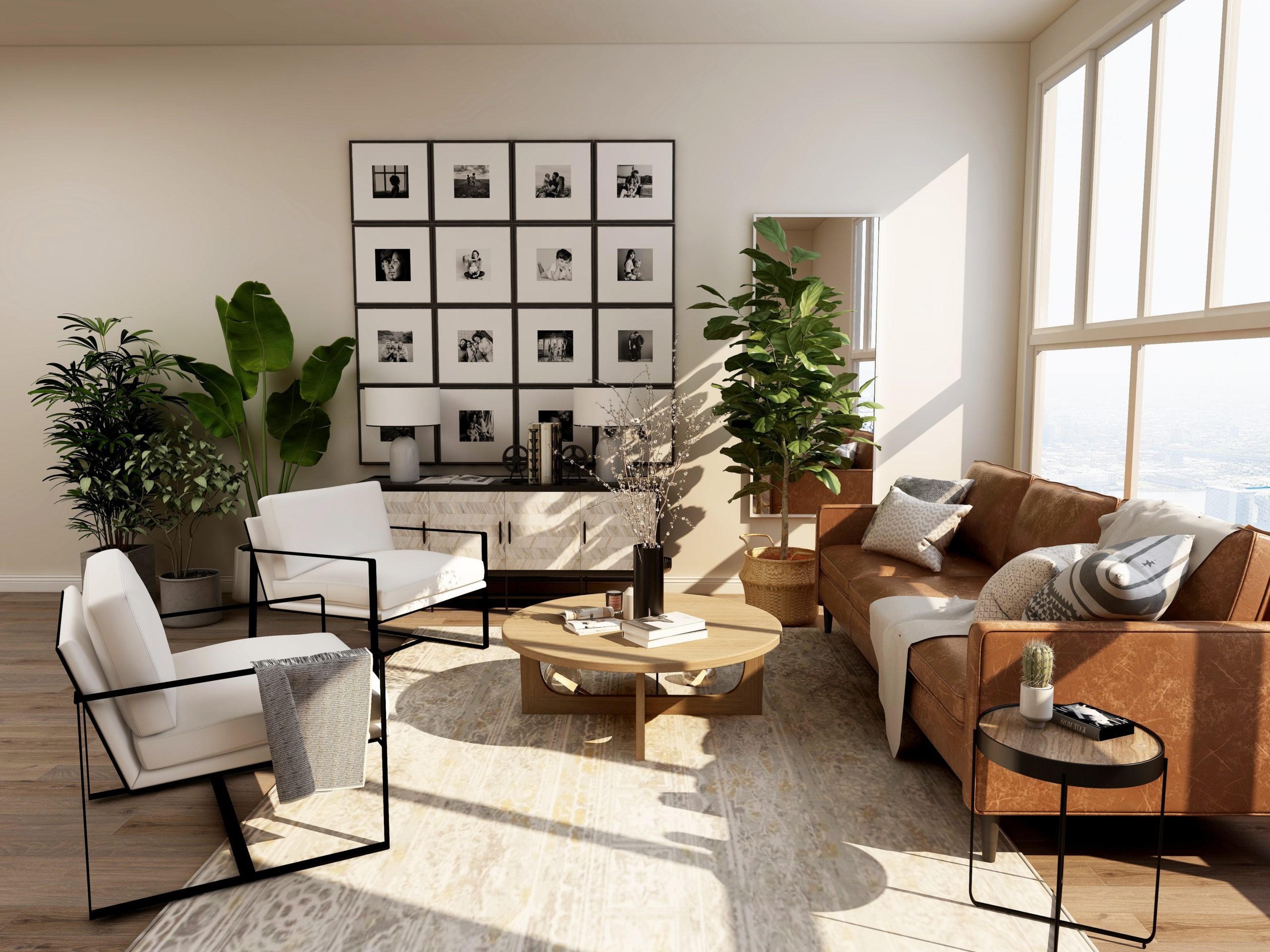Holistic Design Principles

Holistic interior design – Holistic design is a comprehensive approach to interior design that considers the entire space, its occupants, and the environment. It aims to create a harmonious and well-rounded living space that promotes physical, mental, and emotional well-being.
Holistic interior design is an approach that considers the overall well-being of the occupants. It encompasses physical, emotional, and spiritual aspects, creating spaces that are both functional and nurturing. To achieve this, holistic interior designers often collaborate with decor companies that specialize in sustainable and eco-friendly materials, natural lighting, and organic shapes, ensuring that the spaces they create are not only beautiful but also contribute to the overall health and well-being of the occupants.
Holistic design principles emphasize the interconnectedness of all elements within a space. These principles include:
Harmony and Balance
- Holistic design seeks to create a sense of harmony and balance throughout the space.
- This can be achieved through the use of complementary colors, textures, and patterns, as well as the careful placement of furniture and accessories.
- A harmonious space is one that feels inviting, comfortable, and aesthetically pleasing.
Natural Elements, Holistic interior design
- Holistic design often incorporates natural elements, such as wood, stone, and plants.
- These elements bring a sense of the outdoors in and can help to create a more relaxing and calming atmosphere.
- Natural materials are also more sustainable than synthetic materials.
Functionality
- Holistic design considers the functionality of a space as well as its aesthetic appeal.
- Furniture and accessories should be chosen that are both comfortable and practical.
- The layout of the space should be designed to flow well and make it easy to move around.
Personalization
- Holistic design encourages the incorporation of personal touches into a space.
- This can be done through the use of artwork, photographs, and other objects that reflect the personality and interests of the occupants.
- A personalized space is one that feels like home.
By incorporating holistic design principles into interior design, it is possible to create a space that is both beautiful and functional, and that promotes the well-being of its occupants.
Elements of Holistic Interior Design

Holistic interior design is a comprehensive approach to creating interior spaces that promote physical, mental, and emotional well-being. Key elements of this approach include:
- Natural Materials: Using natural materials such as wood, stone, and plants brings the outdoors in, creating a connection to nature and promoting a sense of calm and tranquility.
- Organic Shapes: Incorporating organic shapes, such as curves and rounded edges, mimics the forms found in nature and creates a more inviting and fluid space.
- Mindful Space Planning: Designing spaces with intention, considering the flow of energy, natural light, and the relationship between different areas, creates a harmonious and functional environment.
These elements work together to create a holistic interior design that supports the overall well-being of the occupants.
Incorporating Holistic Elements into Existing Designs
Integrating holistic elements into existing interior designs can be achieved through:
- Adding Natural Materials: Introduce wooden furniture, stone accents, or plants to bring nature indoors.
- Introducing Organic Shapes: Swap out angular furniture for pieces with curved lines or add rounded rugs to soften the space.
- Improving Space Planning: Rearrange furniture to enhance natural light flow, create designated zones, and improve circulation.
By incorporating these elements, you can create a more holistic and sustainable interior design that promotes a sense of well-being and harmony.
Benefits of Holistic Interior Design

Holistic interior design goes beyond aesthetics, embracing a comprehensive approach that considers the physical, mental, and emotional well-being of occupants. It creates spaces that foster harmony, enhance productivity, and promote overall well-being.
Living in a holistically designed space offers numerous benefits:
Physical Benefits
- Improved air quality through the use of natural materials and proper ventilation.
- Reduced stress levels due to calming colors, comfortable furniture, and organized spaces.
- Enhanced sleep quality through the creation of a relaxing and restorative sleep environment.
- Improved posture and ergonomics, leading to reduced physical discomfort.
Mental Benefits
- Increased focus and productivity due to clutter-free and well-organized spaces.
- Enhanced creativity and inspiration through the use of stimulating colors and textures.
- Improved mood and emotional balance through the integration of natural elements and calming colors.
- Reduced anxiety and depression through the creation of safe and supportive spaces.
Emotional Benefits
- A sense of belonging and connection to the space through the use of personal items and meaningful objects.
- Enhanced self-esteem and confidence through the creation of a space that reflects one’s values and aspirations.
- Improved relationships through the creation of shared spaces that foster communication and connection.
- A sense of peace and tranquility through the integration of calming elements and natural materials.
Case Study: Impact of Holistic Interior Design on a Community
A community center in a low-income neighborhood was redesigned using holistic principles. The space was transformed into a welcoming and supportive environment with comfortable furniture, natural lighting, and calming colors. The redesign resulted in increased attendance, improved community engagement, and a reduction in reported stress levels among participants.
Holistic interior design seeks to create spaces that are not only aesthetically pleasing but also supportive of our physical, mental, and emotional well-being. By considering factors such as natural light, airflow, and the use of organic materials, holistic designers aim to create environments that promote health and harmony.
3d interior design can be a valuable tool in this process, allowing designers to visualize and experiment with different design concepts before committing to physical changes.